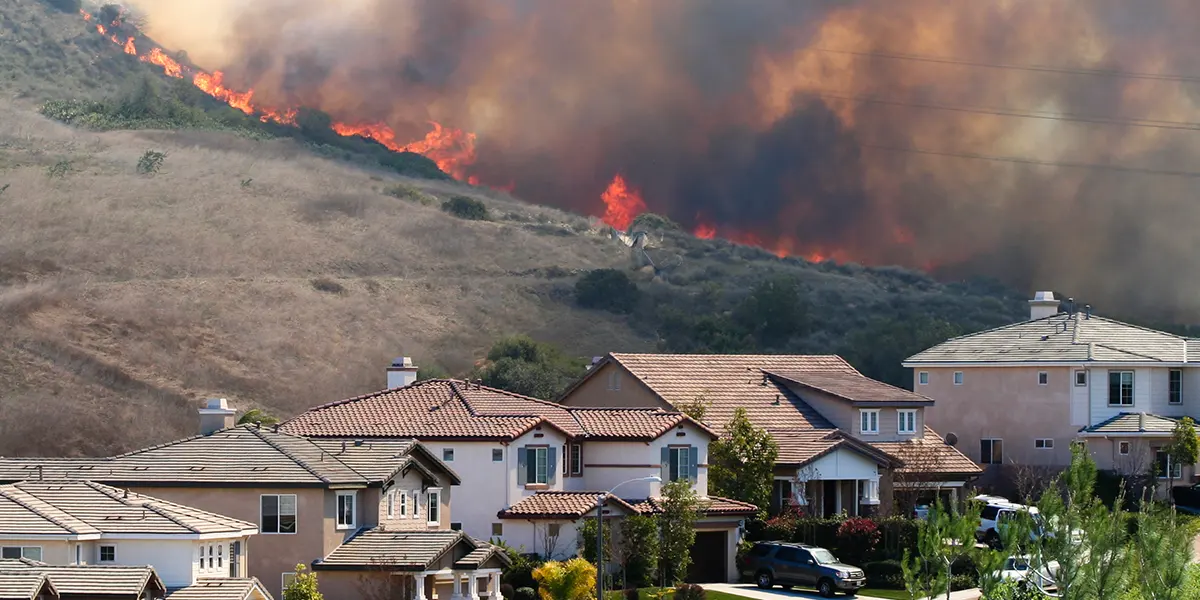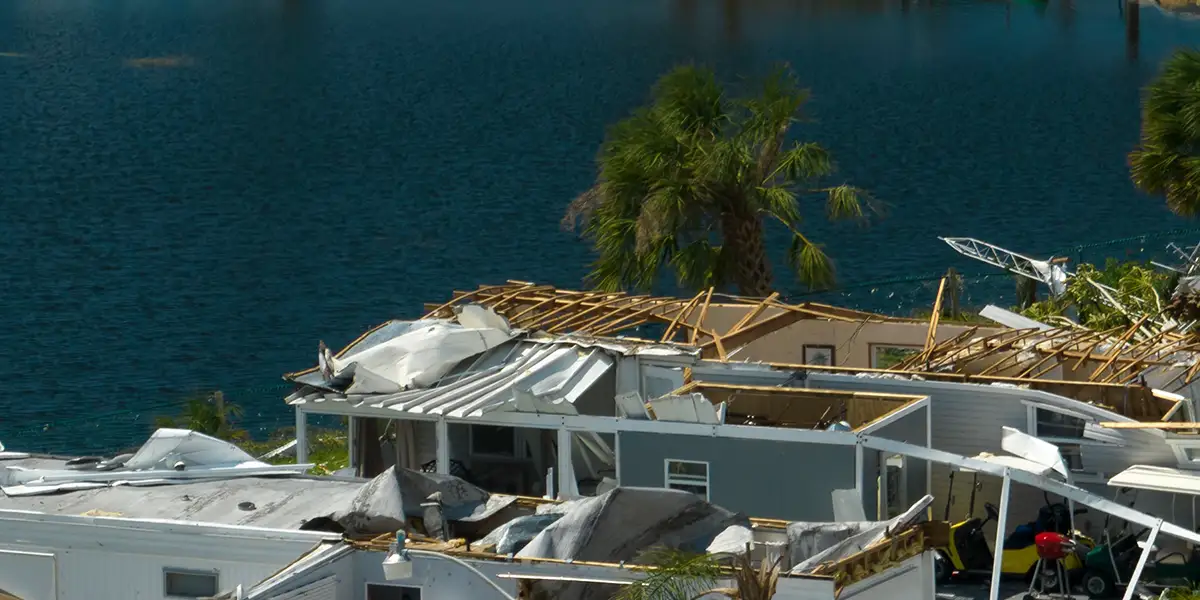The warm start to 2023 during winter across Europe has spotlighted the climate risk of unprecedented droughts having wreaked economic damage across the continent. Europe’s major waterways, like the Po and the Rhine, have experienced record-low water levels already in mid-winter.
Following Europe’s worst drought in 500 years in 2022, temperatures are forecasted to rise, and summers will become drier. But how exactly are droughts expected to worsen and inflict more significant damages?
A growing number of European ski resorts struggled to deliver adequate snow cover in the face of rising temperatures. Indicating that the frequency of cold spells will decrease with national high temperatures for December 2022 and January 2023 were broken across several European countries, including the UK, Germany, and Switzerland. More problematic is the impact this will have on freshwater supplies later this year. And these high temperatures are projected to increase in a continually warming world, heightening problems across the board. “Winters are becoming warmer in Europe due to global temperatures increasing,” said Freja Vamborg, a climate scientist at the European Union’s Copernicus Climate Change Service.
According to the World Meteorological Organisation, “temperatures in Europe have increased at more than twice the global average over the past 30 years – the highest of any continent in the world”, with 45 major drought events occurring in Europe, up nearly 30% since 2000. As confirmed by the Institute of Geodesy at TU Graz, Europe has suffered from a severe drought since 2018, with its water shortage situation precarious. Suppose extreme weather events continue; European droughts could lead to similar droughts every 20 years, whereas without climate change, such an event would happen every 400 years.
Damning Droughts
As the world heats, the amount of moisture in the atmosphere also increases, leading to more frequent and severe droughts in some global regions. Already across Europe, the annual average of 15% of the land area and 17% of the European population is affected by droughts. Although climate change has induced the intensity of droughts, human activities of deforestation, land use changes and over usage of water resources factors can worsen droughts. Nonetheless, the intensification of droughts is heightening negative impacts on agriculture, infrastructure and human populations by altering water availability in the form of natural water cycles and rendering a strain on social and economic factors in affected regions.
Showcased by Andrea Toreti, who stated that “in some parts of Europe, the lack of precipitation and the current deficit is such that it won’t be easy for water levels to recover before the start of the summer”, making it difficult for nations to conserve water for the oncoming warmer summer and many summers ahead with evidence that climate change will alter future European water availability. Furthermore, droughts can exacerbate other natural hazards, such as wildfires. Europe alone has experienced worsening wildfires, with over 800,000 hectares (8,000 km2) burnt in 2022. Two and a half times the annual average of the previous 15 years. In turn, prolonged drought periods are expected to become more frequent, verified by Figure 1 of a map of current droughts in Europe from the EU’s Copernicus programme below, highlighting that most of southern and western Europe are affected by substantial irregularities of soil moisture and river flow due to a dry and warm winter inflicting a regional imbalance.
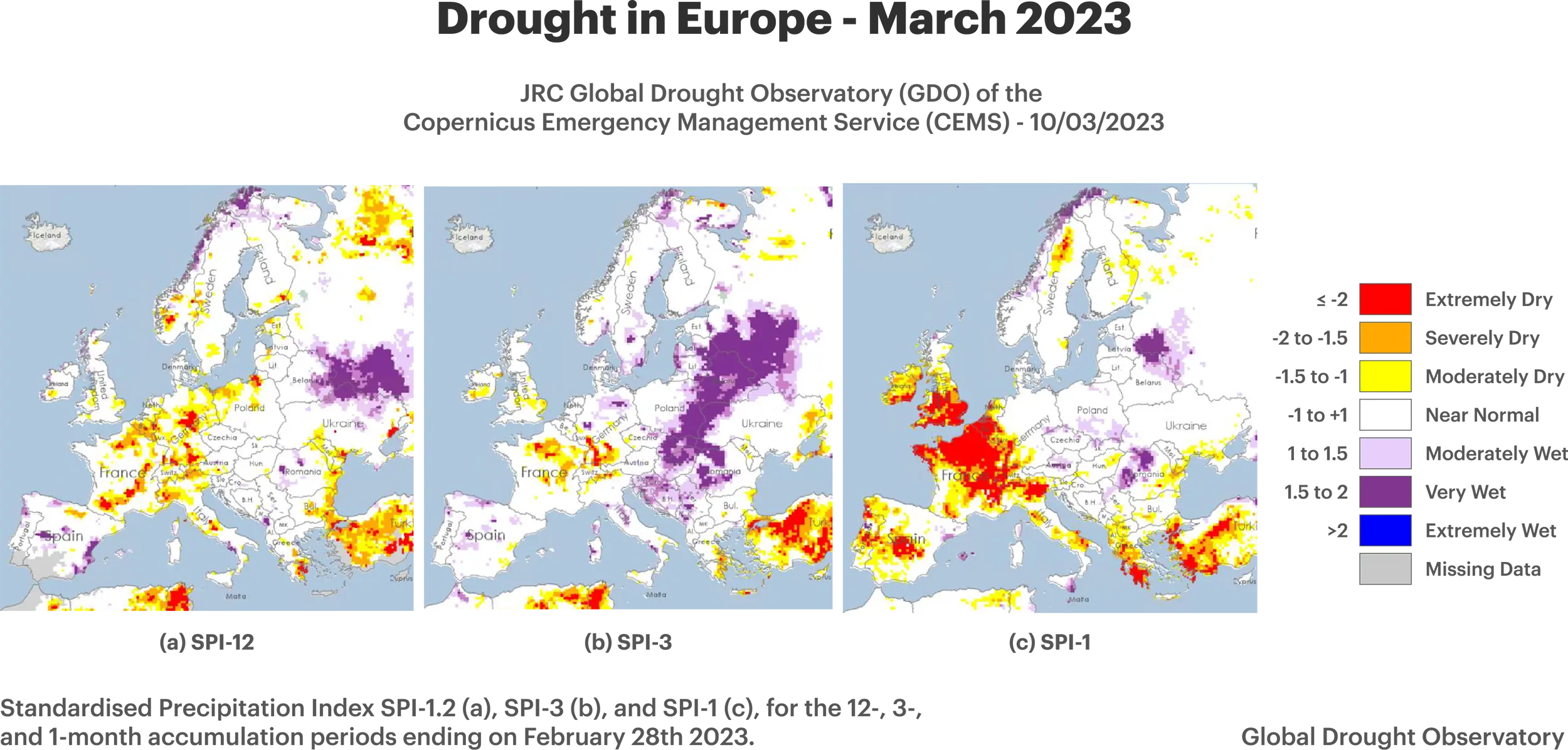
Hung out to dry
Three global drought events were among the ten costliest disasters in 2022, highlighted in Figure 2 below. European drought caused an estimated €3.3 billion in European insured losses, ranked Europe’s worst drought in 500 years, costing €19 billion in insured losses.
Swiss Re believes the main drivers of resulting high losses are economic growth, accumulation of asset values in exposed areas, urbanisation and increasing populations in regions vulnerable to natural perils. However, without climate action (4 °C in 2100 and no adaptation), annual drought losses in Europe are projected to rise to more than €65 billion per year compared with €9 billion per year. Moreover, these figures are forecasted to grow, with droughts expected to occur more often.
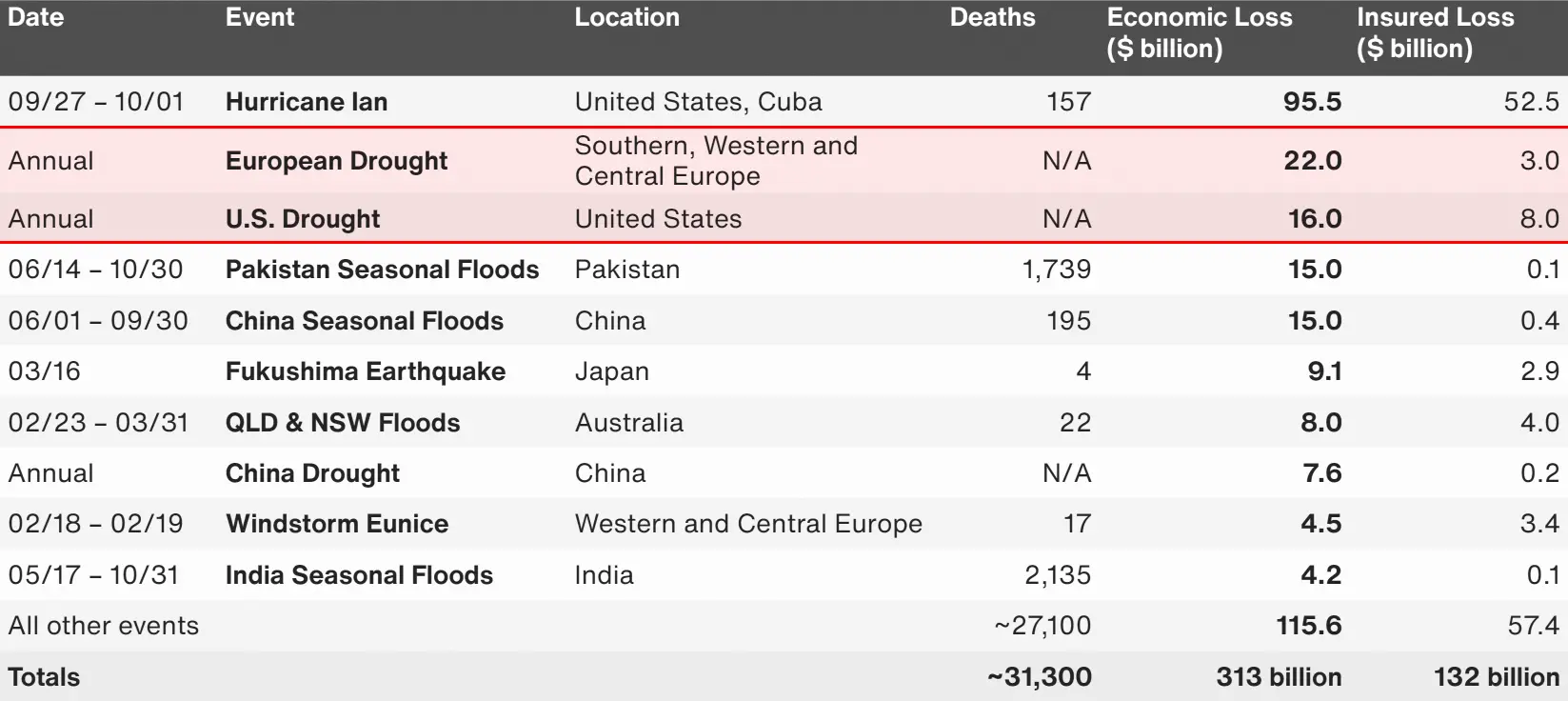
Some European countries affected by unprecedented droughts in recent years include Spain, Greece, and Italy. This includes the impact of the drought on the vital transport 800 km river Rhine with the source of the river in Switzerland reaching its estuary in the Netherlands, adjoining the North Sea. The river is a vital economic artery water transport route for Europe's supply chain that moves over 300 million tonnes of cargo annually.
The drought of 2022 brought disruptive low water levels to the Rhine, shown in Figure 3 below, causing delays to shipping activity forced to sail with cargoes at 25% capacity implicating high costs of almost €5 billion to German industrial output. In turn, the implications of warming temperatures are for the German government to adopt by deepening a section of the Middle Rhine Valley.
At the same time, some companies have adapted by retooling their shipping fleets to meet the low water changes of the Rhine, such as chemical giant BASF which transports 40% of its raw material via river transport, building a tanker for low water. It is one example of how companies must prepare and adapt to climate change's physical risks, costly in both timing and infrastructure. However, droughts occurred not only in Europe but also across other regions. For example, a megadrought hit North America, and China faced its most severe heatwave in six decades, perplexing the global scale of conceivable drought losses.
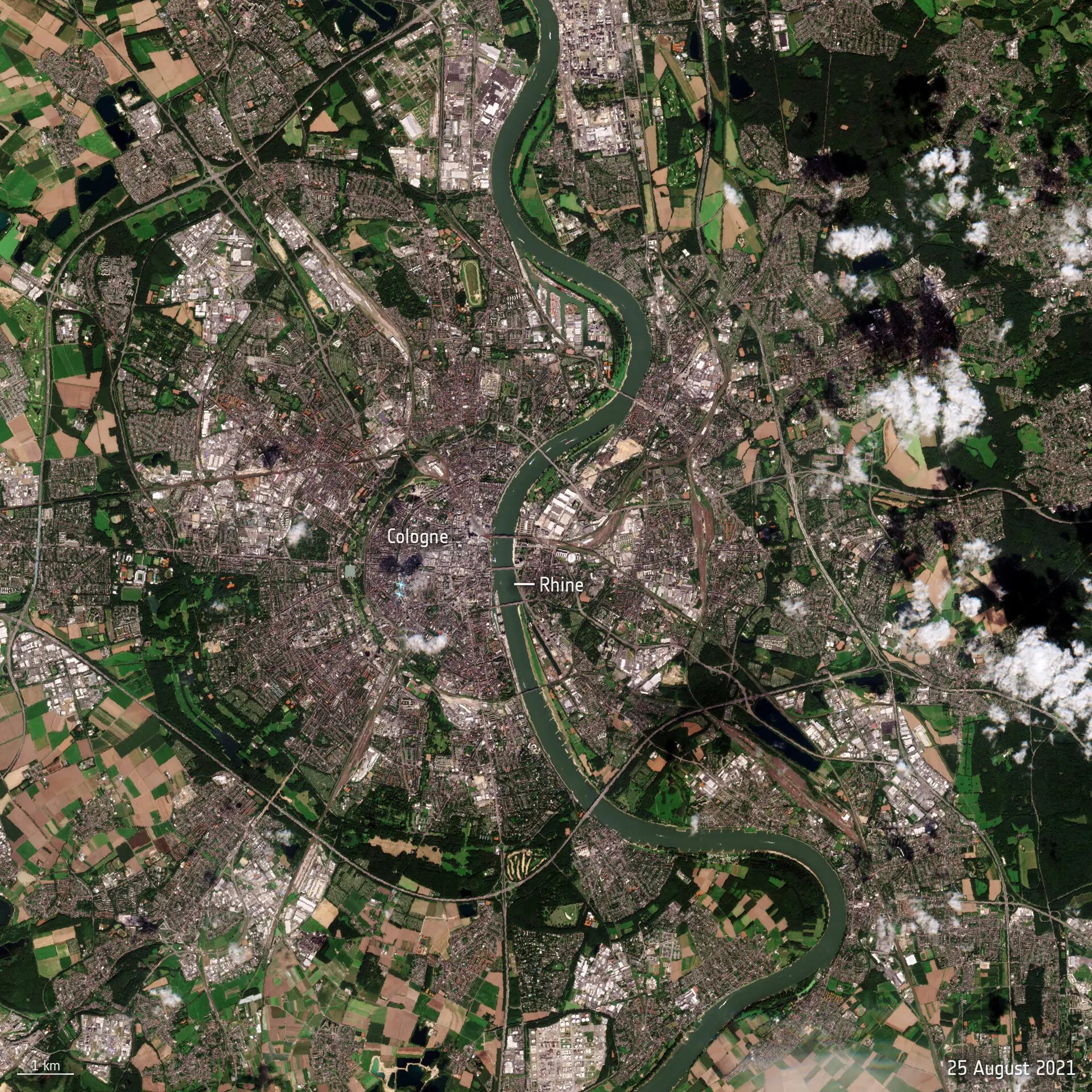
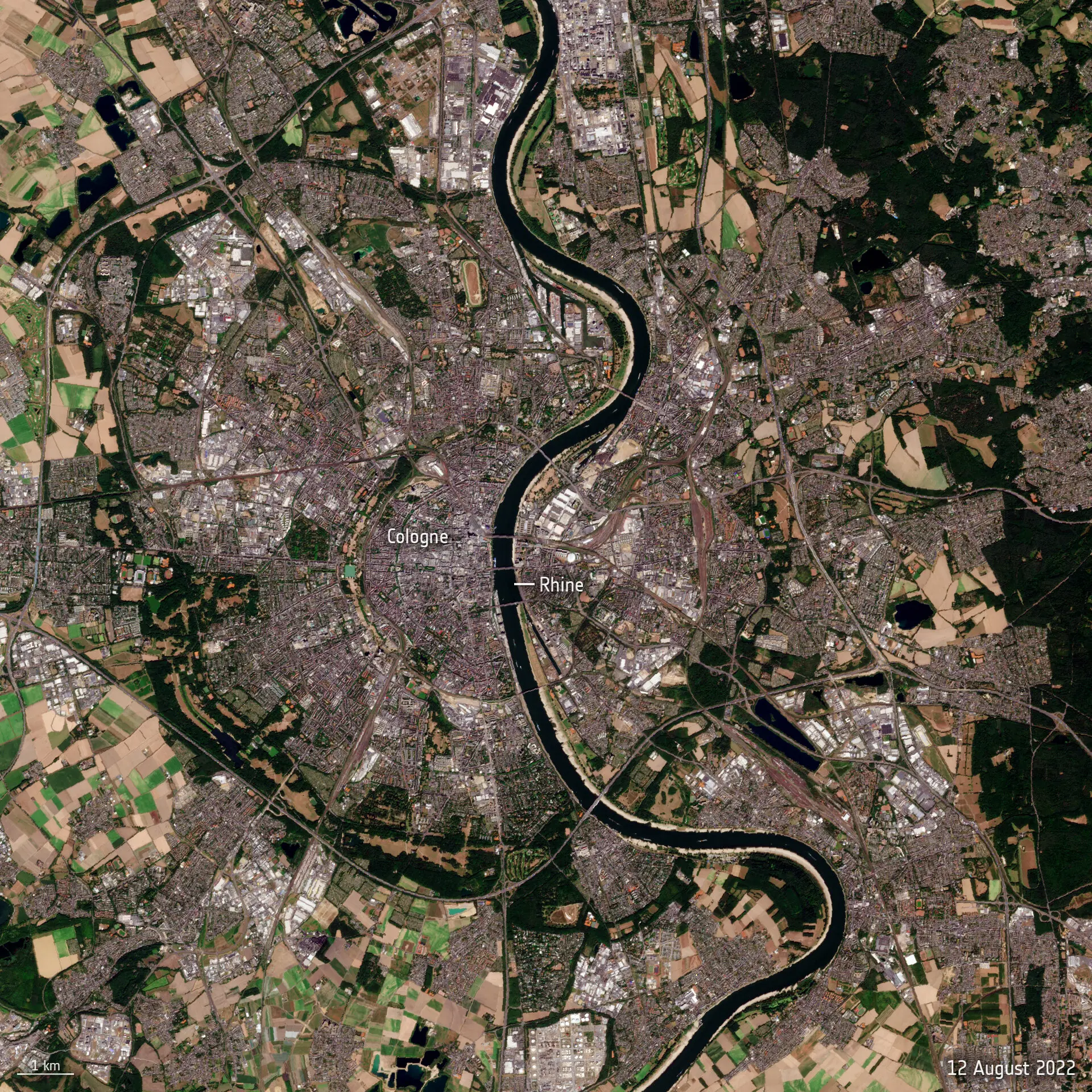
It is important to note that droughts are complex because of their persistence and propagation throughout the hydrological cycle lasting for extended periods. If droughts become more frequent, as expected, the time between droughts may become shorter than drought recovery time, leading to permanently damaged ecosystems and widespread degradation of the land carbon sink.
The potential scale and intensity of economic damages from prolonged droughts have made the weather events a concern for organisations, especially insurance, agriculture trade and energy entities, needing to improve measures against potential drought losses. To support existing monitoring, early warning and preparedness measures, data is vital to make well-informed decisions about managing and mitigating droughts' impacts.
The time to quantify Droughts
Typically, the monitorisation of droughts is based on various indices. For example, the standardised precipitation index (SPI), which shows the deviation from average precipitation, is related to drought hazard. In contrast, other indices monitor other factors' status to assess droughts' potential impacts. However, there remain constraints across industries, especially insurance and reinsurance companies, in understanding the severity of droughts and related damages, with a lack of sufficient quantitative data and droughts being difficult to quantify for organisations. In addition, the risk of drought risk management is now more predictable and unrestricted to certain parts of the world, especially when modelling supply chain risks.
With the support of climate risk measurement tools, entities can avoid drought losses. Climate X’s climate analytics platform, Spectra, can deliver cohesive and understandable data to prepare businesses to build climate resilience against the physical risk of increasing drought events. Most organisations impacted by droughts must align with the ‘new normal’ of droughts and take a proactive approach to climate risk management before it is too late.
Sources
- Marx, A., Kumar, R., Thober, S., Rakovec, O., Wanders, N., Zink, M., Wood, E. F., Pan, M., Sheffield, J., and Samaniego, L.: Climate change alters low flows in Europe under global warming of 1.5, 2, and 3 °C, Hydrol. Earth Syst. Sci., 22, 1017–1032, https://doi.org/10.5194/hess-22-1017-2018, 2018.
- Naumann, G., et al. "Assessment of drought damages and their uncertainties in Europe." Environmental Research Letters 10.12 (2015). https://doi.org/10.1088/1748-9326/10/12/124013.
- Naumann, G., Cammalleri, C., Mentaschi, L. et al. Increased economic drought impacts in Europe with anthropogenic warming. Nat. Clim. Chang. 11, 485–491 (2021). https://doi.org/10.1038/s41558-021-01044-3
- Schwalm, C., Anderegg, W., Michalak, A. et al. Global patterns of drought recovery. Nature 548, 202–205 (2017). https://doi.org/10.1038/nature23021
- Toreti, A., Bavera, D., Acosta Navarro, J., Arias-Muñoz, C., Avanzi, F., Marinho Ferreira Barbosa, P., De Jager, A., Di Ciollo, C., Ferraris, L., Fioravanti, G., Gabellani, S., Grimaldi, S., Hrast Essenfelder, A., Isabellon, M., Jonas, T., Maetens, W., Magni, D., Masante, D., Mazzeschi, M., Mccormick, N., Meroni, M., Rossi, L., Salamon, P. and Spinoni, J., Drought in Europe March 2023, EUR 31448 EN, Publications Office of the European Union, Luxembourg, 2023, ISBN 978-92-68-01068-6, doi:10.2760/998985, JRC133025.
- Yin, J., Gentine, P., Slater, L. et al. Future socio-ecosystem productivity threatened by compound drought–heatwave events. Nat Sustain (2023). https://doi.org/10.1038/s41893-022-01024-1
- Aon (2023) Weather, Climate and Catastrophe Insight. https://www.aon.com/getmedia/f34ec133-3175-406c-9e0b-25cea768c5cf/20230125-weather-climate-catastrophe-insight.pdf#page=3
- Axa (2023) How Extreme Weather Conditions Are Impacting the Agrifood Chain? https://climate.axa/how-extreme-weather-conditions-are-impacting-the-agrifood-chain/
- Copernicus (2022) Drought in Europe August 2022. https://edo.jrc.ec.europa.eu/documents/news/GDO-EDODroughtNews202208_Europe.pdf
- Copernicus (2022) Seasonal Trend for European Union https://effis.jrc.ec.europa.eu/apps/effis.statistics/seasonaltrend
- DW (2022) Plans to 'deepen' Rhine river hit resistance. https://www.dw.com/en/drought-ships-cargo-vessels-shipping-fossil-fuels-energy-shortage-crisis/a-63255851
- El Pais (2022) Global warming: Extreme droughts 20 times more likely under current climate conditions. https://english.elpais.com/science-tech/2022-10-06/global-warming-extreme-droughts-20-times-more-likely-under-current-climate-conditions.html
- European Commission (2023) Drought Observatories datasets. https://data.jrc.ec.europa.eu/collection/drought
- EURACTIV (2023) ‘Feels like summer’: Warm winter breaks temperature records in Europe https://www.euractiv.com/section/climate-environment/news/feels-like-summer-warm-winter-breaks-temperature-records-in-europe/
- Euronews (2023) Drought in Europe: the next few weeks will be crucial, especially for agriculture. https://fr.euronews.com/2023/02/22/secheresse-en-europe-les-prochaines-semaines-seront-cruciales-notamment-pour-lagriculture
- Financial Times (2023) Water security in focus as England faces threat of another summer drought. https://www.ft.com/content/5c46d8c3-c0bc-4ae6-8b0d-b8721ff28ac6
- Groundreport (2022) La Niña to continue into early 2023, prolonging drought, flooding. https://groundreport.in/la-nina-to-continue-into-early-2023-prolonging-drought-flooding/
- The Central Commission for the Navigation of the Rhine (2019) Inland Navigation in Europe. https://inland-navigation-market.org/wp-content/uploads/2019/11/ccnr_2019_Q2_en-min2.pdf.pdf
- IPCC (2020) Regional fact sheet. https://www.ipcc.ch/report/ar6/wg1/downloads/factsheets/IPCC_AR6_WGI_Regional_Fact_Sheet_Europe.pdf
- Munich Re (2023) Climate change and La Niña driving losses: the natural disaster figures for 2022. https://www.munichre.com/en/company/media-relations/media-information-and-corporate-news/media-information/2023/natural-disaster-figures-2022.html
- National Infrastructure Commission (2021) Water and Wastewater. https://nic.org.uk/app/uploads/Annex-D-Water-and-wastewater-Final.pdf
- Relief Web (2022) Counting The Cost 2022: A year of climate breakdown (December 2022). https://reliefweb.int/report/world/counting-cost-2022-year-climate-breakdown-december-2022
- South China Morning Post (2022) China’s record heatwave, worst drought in decades. https://multimedia.scmp.com/infographics/news/china/article/3190803/china-drought/index.html
- Swiss Re (2022) A perfect storm. https://www.swissre.com/institute/research/sigma-research/sigma-2023-01.html
- The Guardian (2022) Megadrought in the American south-west: a climate disaster unseen in 1,200 years. https://www.theguardian.com/environment/2022/sep/12/us-west-megadrought-climate-disaster
- The Guardian (2023) ‘Very precarious’: Europe faces growing water crisis as winter drought worsens. https://www.theguardian.com/weather/2023/mar/04/very-precarious-europe-faces-growing-water-crisis-as-winter-drought-worsens
- TU Graz (2023) Satellite Data Shows Sustained Severe Drought in Europe. https://www.tugraz.at/en/tu-graz/services/news-stories/media-service/singleview/article/satellitendaten-belegen-anhaltend-schwere-duerre-in-europa
- UNCCD (2022) Drought in Numbers. https://www.unccd.int/sites/default/files/2022-05/Drought%20in%20Numbers.pdf
- Water UK (2022) Dealing with drought. https://www.water.org.uk/blog-post/dealing-with-drought/
- World Economic Forum (2022) Droughts are creating new supply chain problems. This is what you need to know. https://www.weforum.org/agenda/2022/11/drought-trade-rivers-supply-chain/


